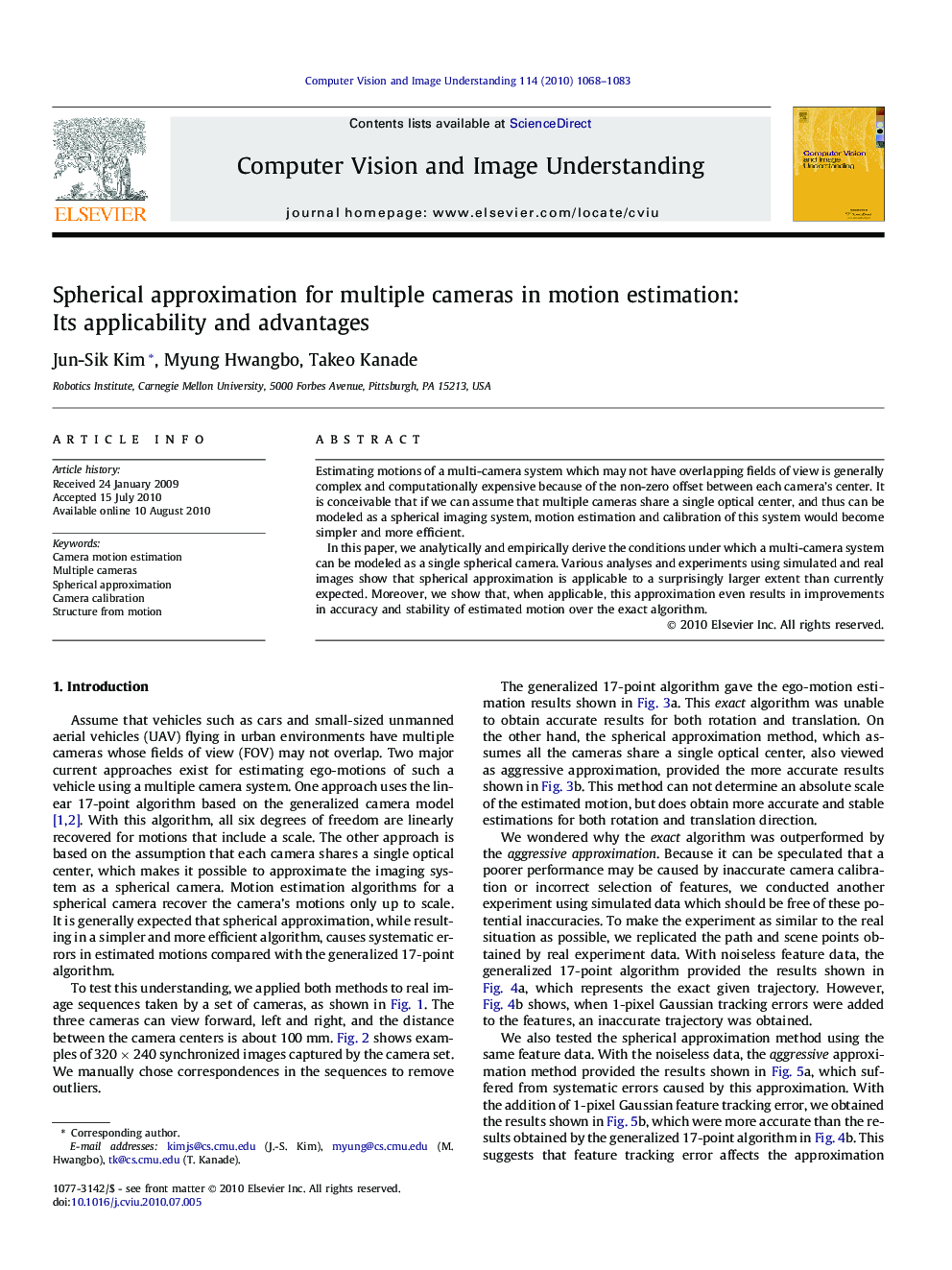| Article ID | Journal | Published Year | Pages | File Type |
|---|---|---|---|---|
| 526193 | Computer Vision and Image Understanding | 2010 | 16 Pages |
Estimating motions of a multi-camera system which may not have overlapping fields of view is generally complex and computationally expensive because of the non-zero offset between each camera’s center. It is conceivable that if we can assume that multiple cameras share a single optical center, and thus can be modeled as a spherical imaging system, motion estimation and calibration of this system would become simpler and more efficient.In this paper, we analytically and empirically derive the conditions under which a multi-camera system can be modeled as a single spherical camera. Various analyses and experiments using simulated and real images show that spherical approximation is applicable to a surprisingly larger extent than currently expected. Moreover, we show that, when applicable, this approximation even results in improvements in accuracy and stability of estimated motion over the exact algorithm.
